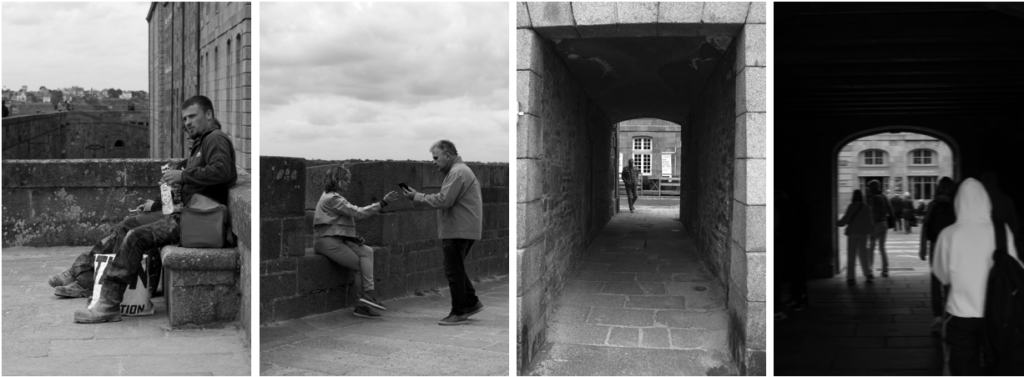- Read two texts above (John Szarkowski’s introduction and review by Jed Perl) and select 3 quotes form each that is relevant to your essay.
- Select two images, one that represent a mirror and another that represents a window as examples to use in your essay.
- Use some of the key words that you listed above to describe what the mirrors and windows suggest.
Notes
Jed Perl’s Review on Szarkowski’s Thesis
- Quote 1 – This thesis suggests that there is a fundamental dichotomy in contemporary photography between those who think of photography as a means of self-expression and those who think of it as a method of exploration – John Szarkowski
- Quote 2 – the photograph is seen either as a mirror–a romantic expression of the photographer’s sensibility as it projects itself on the things and sights of this world; or as a window–through which the exterior world is explored in all its presence and reality. – Original press release 1978
In his review of Mirrors and Windows: Messages from MoMA, Jed Perl critiques John Szarkowski’s thesis on the shift in American photography from public to private concerns. Perl argues that Szarkowski’s framework oversimplifies the complexities of the medium.
“Szarkowski’s thesis is a simplification, a reduction of the complexities of photography to a single, overarching narrative.” – Jed Perl
Perl suggests that Szarkowski’s focus on the private sphere neglects the public and social aspects of photography, which are equally important in understanding the medium.
Key points:
Perl argues that Szarkowski’s thesis oversimplifies the complexities of photography
Perl suggests that the private sphere is not the only aspect of photography
Perl critiques Szarkowski’s reduction of photography to a single narrative
Note: I couldn’t find any online sources with direct links to Jed Perl’s review. If you have access to the original review, please provide the publication and page numbers for further context.
Dorothea Lange’s Work on “The Grapes of Wrath”
Dorothea Lange’s photographs were not directly used in John Steinbeck’s novel “The Grapes of Wrath”. However, her work did document the lives of migrant workers, including those who were affected by the Dust Bowl and the Great Depression, which was the same era and theme that Steinbeck’s novel addressed.
Lange’s photographs were published in various publications, including the Farm Security Administration (FSA) collection, which was a government program that documented the lives of rural Americans during the 1930s and 1940s.
John Szarkowski’s Theory
John Szarkowski was a renowned American photographer and curator who served as the director of the Museum of Modern Art’s photography department from 1962 to 1980. His theory on photography is centered around the idea that photography is a medium that can be used to explore the relationship between the individual and the environment.
Key Points of Szarkowski’s Theory:
- The Camera as a Tool for Exploration: Szarkowski believed that the camera allows the photographer to explore and understand the world around them, and that this exploration is a key aspect of the medium.
- The Importance of Context: Szarkowski emphasized the importance of considering the context in which a photograph is taken, including the social, cultural, and historical context.
- The Role of the Photographer as an Observer: Szarkowski saw the photographer as an observer who can capture the world in a unique and personal way, but also as someone who is influenced by their own biases and perspectives.
Jed Perl’s Review of Szarkowski’s Theory
Jed Perl, an American art critic and historian, has written extensively on Szarkowski’s theory and its impact on the field of photography. In his review, Perl highlights the following key points:
- Szarkowski’s Influence on the Field: Perl notes that Szarkowski’s theory had a profound impact on the way photographers think about their work and the medium as a whole.
- The Importance of Contextualizing Photography: Perl emphasizes the importance of considering the context in which a photograph is taken, as Szarkowski advocated for.
- The Limitations of Szarkowski’s Theory: Perl also notes that Szarkowski’s theory has its limitations, particularly in its emphasis on the individual photographer’s perspective, which can overlook the role of power dynamics and social structures in shaping the photograph.
Links used:










